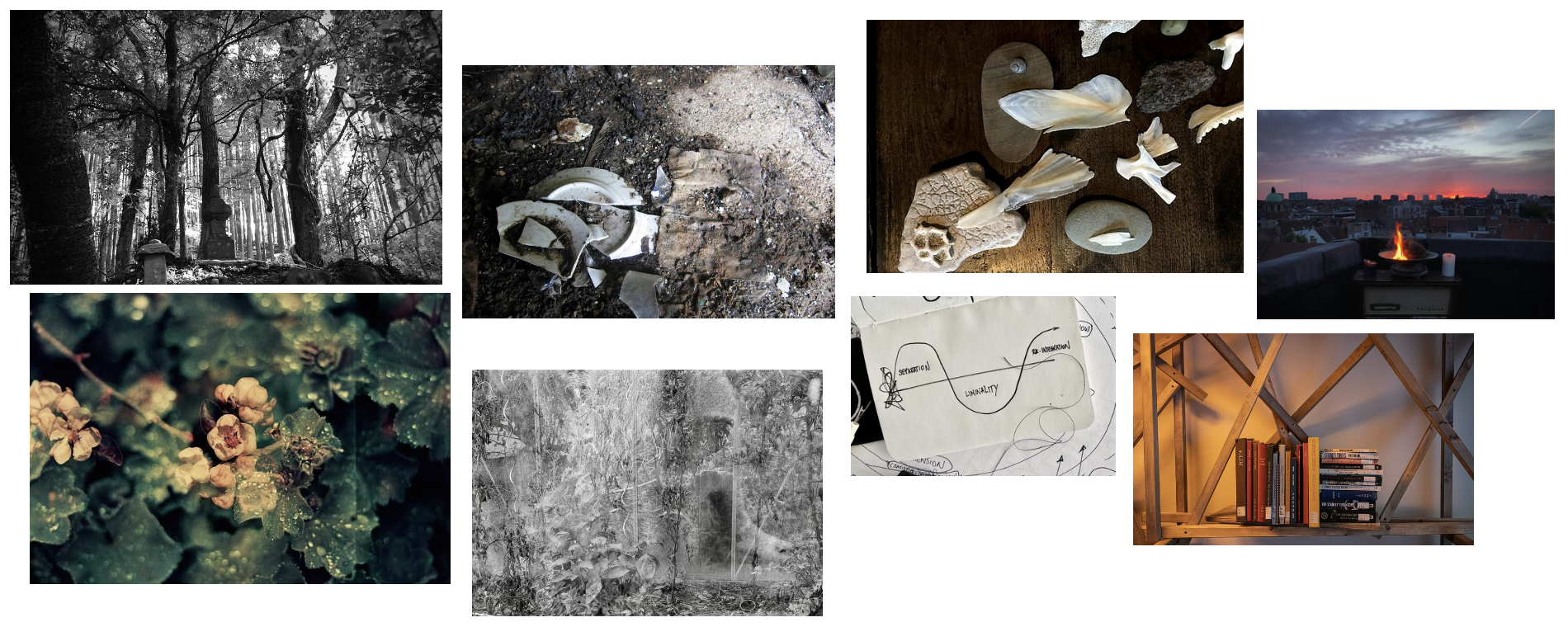Wabi-sabi route
Tending to the transient and the overlooked, “staying with the trouble”
Taking a more suggestive and impressionistic approach to its subjects, the ‘wabi-sabi’ route looks at all things transient, unfinished, or overlooked. Inviting people to stay their hands, and defer the temptation to act or intervene, we ask what it might feel like, instead, to watch, wait, and let things unfold. Instructional texts and other materials aim to engage people at an embodied, practical level, sharing exercises and techniques to practice attunement, immersion, relating to spaces, or laying fallow. The route looks for lessons and insights from the worlds of ritual and monastic practice, scrutinising various examples of those who have sought to operate from a position of remove, or some level of voluntary detachment, from the world at-large. Extending beyond the written word, a range of poetic and multisensory materials prompt reflections on matters of time, duration, maintenance, care, transitions and liminal states, and the neglected art of bringing things to an end.
Some Questions
- When does it make sense to slow down or pause, before intervening in a given situation?
- What do we pay attention to, and what do we overlook, and why?
- How do you land in a new place? How do you do nothing? How do you learn to inhabit or dwell in the liminal phases, the cracks between worlds?
- How do you tend to a landscape? How do you create space for the impermanent and the incomplete?
- What systems, structures, tactics, and technology can facilitate and/or sustain a state of flow?
- What lessons do past and present systems of monasticism and hermitage have for creative practice?
- What can rituals do?
- When do you bring things to an end?

